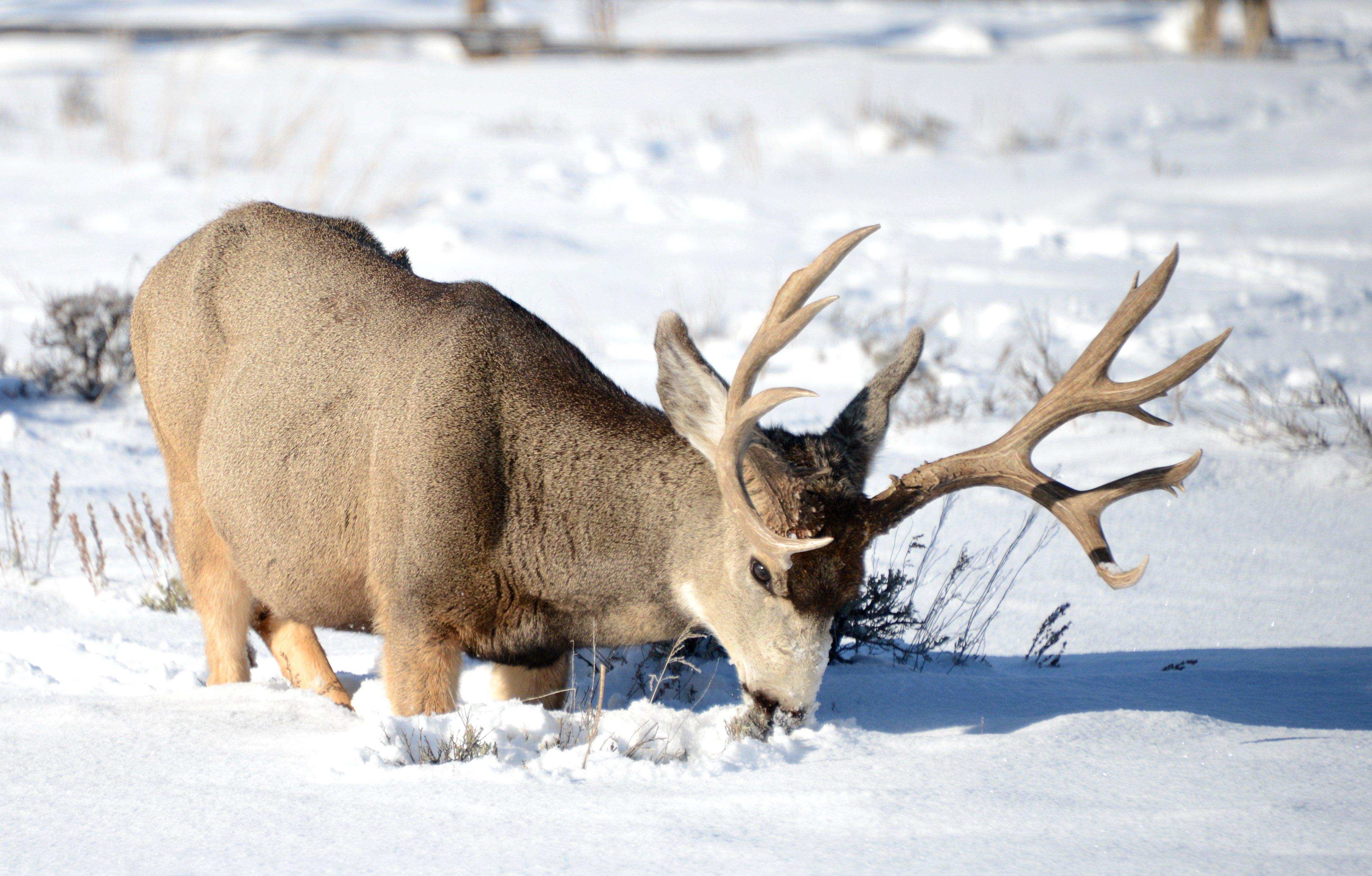Up to 80 percent of deer and almost all fawns may have been killed

The winter of 2022-23 will go down in history as one of the worst for many western states’ wildlife. Image by Kirk Geisler
The Wyoming Range mule deer winter kill may be far worse than previously projected.
Cowboystatedaily.com reports that, according to Wyoming Game and Fish Director Brian Nesvik, as many as 80 percent of the adult deer in the region may have succumbed to the harsh weather, and this year’s crop of fawns was essentially eliminated.
Nesvik told the Wyoming Legislature’s Joint Travel, Recreation, Wildlife, and Cultural Resources Committee that the Wyoming Range mule deer herd consisted of around 30,000 going into to winter.
The number of mule deer killed by the winter weather was determined by monitoring the deer as they migrated back to their summer range after the massive snowpacks finally melted.
The fate of the pronghorn and elk in the region has not yet been fully determined, as Game and Fish doesn’t typically conduct widespread herd counts in the spring.
The winter kill didn’t affect the entire state, and Nesvik said overall Wyoming’s elk numbers remain above objective for some herds. But the winter conditions were harsh enough in some areas to kill a large number of elk.
“We did see some winter elk mortality. That’s not something I’ve seen in my career,” Nesvik said.
He said regions around Pinedale, Kemmerer, the Green River area, parts of Sweetwater County, and to the south around Baggs were affected the most.
In some areas, pronghorn suffered both from the brutal winter weather and from a rare strain of pneumonia that spread among herds.
Due to the losses, the Wyoming Game and Fish Commission cut approximately 10,000 antelope hunting tags. They also cut the number of deer tags.
“We had pronghorn hunt areas where we closed the season completely,” Nesvik said.
No deer seasons were shut completely down, but doe licenses were severely cut back or eliminated in some hunt areas.
“We have heard from a lot of people, ‘Shut everything down,’” Nesvik said. “But buck deer don’t have babies.”
He explained that as long as the does are protected, the herd should bounce back.
“You can literally [have] one buck deer for every 20 does and they’re all going to be covered,” he said.
The cut in hunting tags and the decline of nonresidents applying for elk tags could negatively impact Game and Fish’s revenue. The agency’s budget is funded largely by the hunting and fishing license tags and Wyoming’s share of federal taxes that hunters and anglers pay on hunting and fishing gear.
Nesvik said, fortunately, Game and Fish has enough saved to cover six months of operating expenses, so there shouldn’t be a budget crisis. But “one-time” expenses, such as new buildings or infrastructure improvements, might have to wait.










